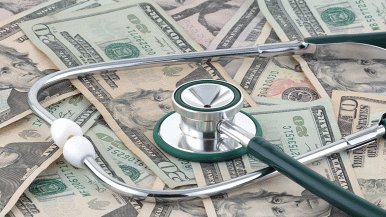In 2019, the average American household spent almost $5,000 per person on health care — twice the amount spent just 20 years ago. Health care costs may be rising, but there are ways to make your care more affordable. These tips can help you become a more informed consumer so you can save money while still getting the care you need.
Before your visit
- Use in-network providers as much as possible.
Always check with your insurance company or provider to see if the provider is in or out of your network. You can see a provider outside of your network if your insurance plan allows, but you will pay more. - Avoid using the emergency room for non-emergency medical issues.
When you are hurt or become ill, determine how serious it is and how soon to seek medical attention. This will help you decide whether to call your primary care physician’s office, schedule a virtual urgent care video visit, go to an urgent care clinic or go to an emergency department. It pays to think about the right place to go. Treatment in an emergency department can cost two to three times more than treatment at your provider's office. If you’re unsure, call your primary care doctor who can help determine where, and when, to get care. - Shop around.
It may be convenient to do all your labs and scans in the same location as your doctor’s office, but, if cost is a problem, you can get these services done elsewhere at a lower price. The results can then be sent to your doctor’s office, and you can take your scans for your upcoming visit. Hospitalcostcompare.com and healthcarebluebook.com are tools that can help you determine the average costs of medical procedures in your area. Your insurance company may also have an option to help you compare costs.
After your visit
- Ask for a discount.
Most providers will offer a discount for paying the bill in full, but you must request it. The discount will vary among providers, but it’s a win-win situation: You save money and providers get the charges off their books and spend less in collection efforts. - Ask for a payment plan.
If the provider does not offer a discount for paying the bill in full, ask about an interest-free monthly payment plan. Call to negotiate favorable terms that you both can agree to, and be realistic about what you can afford to pay each month. You can always renegotiate terms down the road if you run into financial difficulty. A history of good faith and timely payments will work in your favor. - Ask for financial assistance.
Nonprofit hospitals are required to have financial assistance programs in place. You can review the hospital’s financial assistance policy on their website or call their office to get eligibility information. Financial assistance can range from 10% to 100% of the charges, depending on your income/assets and family size. Don’t assume you won’t qualify for financial assistance, even if your income is higher. You may qualify if your income is less than six times the federal poverty rate.




